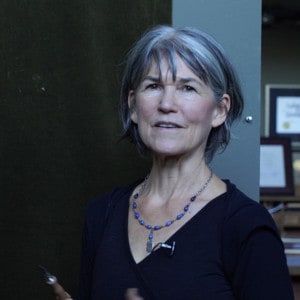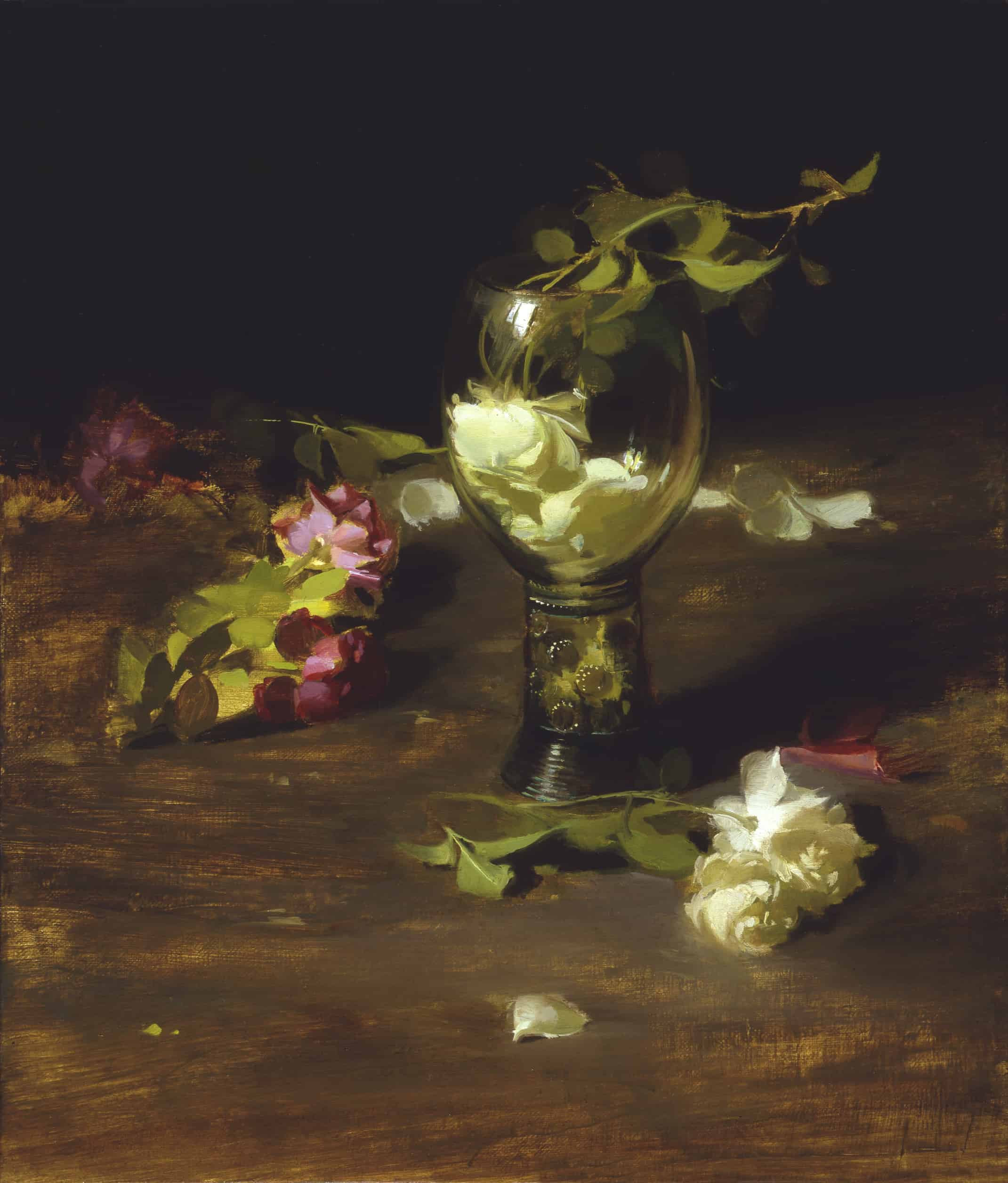Introducing Guest Artist Sherrie McGraw

As one of America’s foremost artists and teachers, what are you most proud of?
“I am particularly proud of having been awarded the Medal for Lifetime Achievement in the Arts from The Butler Institute of American Art in Youngstown, Ohio. I am only the second woman to receive this honor since its inception. The first recipient was director of the Metropolitan Museum of Art (The Met), the colorful Thomas Hoving. My first job while a student at the Art Students League of New York was a security guard at the Met. And the first show I guarded was the last show Thomas Hoving curated. I was on the early watch from four to midnight when there was nobody but us guards at the museum. We were basically alone with the artwork all night.”
What makes a great painting?
Sherrie shares that “The one word that comes to mind is intelligence…visual intelligence. And if you have that, the result will have the possibility of being great.”
Do you have any reflection on life in the last two months as a professional artist?
“I have to say that this time has made me see how much busy work goes on in one’s life. And when you take a lot of that out, it does give you a different perspective about life and what is important. I think what everyone is seeing—when relationships have been stripped bare and we don’t get to see people in person—is that people are the most important thing in life. This time is making me relish the relationships that I have and how they contribute to the depth of my artwork.
By design, artists are selfish—they are always trying to protect their painting time and that is for an important reason: artists give an enormous gift to humanity. In order to achieve that it takes a lifetime of hard work. But now that we have fewer professional distractions, it’s giving me a chance to relax a little more and give more time to the relationships that matter.”

Could you tell me about your relationship with different mediums?
“The reason drawing is the traditional foundation for being an artist is that it is the way a person learns to see. Even though everyone drew as children and innately ‘spoke’ the language, as adults, drawing becomes the tool for how we artists develop a true understanding of the visual world.
I use several different mediums—oil, watercolor, charcoal and pastel. Watercolor is a somewhat new medium for me (two or three years ago I picked it up in earnest), and I find it is great for the times when I want to capture my subject’s form, but I am still interested in its color. Another similar medium to this is pastel, in that you can capture the color but not have to deal with paint quality, which is the most difficult thing to master. Both mediums allow you to capture the subject very quickly but still work with color. When you want to go more deeply into your subject using thick and thin paint, really, only oil will suffice. There is a richness and depth to oil that is singular to it alone. It is the hardest medium to master even though a lot of people paint in oil.”
Sherrie goes on to describe a way to approach her paintings, “Abstract Realism (David Leffel and I coined this term) refers to artists in history that had an appreciation for the abstract beauty of paint. Even though the image they convey is real, the brushstrokes are really abstract. It is a marriage of two qualities: abstract paint and verisimilitude. A relative few people in art history have done it. Rembrandt was the first after Titian’s initial voyage into the world of making paint strokes. Before that artists prided themselves on leaving no sign of the brush. No art critic has ever pointed this distinction out and given it name, so David and I did—Abstract Realism. This sensibility is very different from how most realism is perceived today, where it is judged more by how well it mimics a photograph. Most realists learn to paint by copying what they see, but abstract realists interpret reality. The viewer thrills in the sheer beauty of the paint, but can relate because the image looks real.”
Why flowers?
“I have quite a big garden so I’ve been planting roses and all kinds of flowers over the years. I think it is just something human in us, that we are drawn to beauty. In nature, beauty is really a necessary part of life. Certainly beauty is why I live and breathe.”

“Anytime people work at drawing, painting, playing an instrument, or learning to tap dance, etc., they will inevitably learn how to solve a problem. The arts train kids to become excellent at seeing the parts and how they relate to the whole. No matter what their expertise becomes they’ll have learned how to approach their field with the beauty of finding an elegant solution. There is an art to doing anything, and when understanding develops, simpler solutions arise. Studying the arts teaches children to perceive problems as beautiful things.”
Sherrie, what are the most important qualities in a student?
“The most important quality in students is that they are open to learning and that they love the discipline. I wasn’t the most talented kid in art growing up—my friends were certainly more naturally talented than I was—but painting spoke to me on a soul level and I just couldn’t let it go. I wanted to understand it so desperately that this passion for it helped me survive all the sacrifices I made. What makes anyone really good at anything is that they love it. That is how you will survive the inevitable pain and rejection. The ones that are really good in any field, love it the most.”
How do you balance growth and self-compassion?
“I think it is difficult balance, because the best artists I know, in one sense, are the most insecure. This insecurity comes from knowing that you don’t have all the answers. It also comes from an appreciation of what you want to learn. This aspiration is what gives you the strength to keep going. Becoming an artist is a human endeavor, and it has filled the lives of some of the most intelligent humans that have walked the earth. This is how rich and incredible the art of painting is! But if you love it, then it doesn’t matter what difficulties come your way, you just keep pushing through it.”
How do you approach your own painting?
“When you talk about perception, it is colored very much by our own psychology. If someone is going to a subject with the intention of copying something static, that is what it will be…dead. Life is moving, flowers fade, things change, fruit withers. Change is constant, and yet an artist is trying to capture a fleeting moment while nature is changing before our eyes. It takes humility and flexibility to capture this moment. I always try for a transcendent quality in my work, but that requires a level of receptivity and paying attention to the painting, because it takes on a life of its own. You have to see what it needs and that makes painting exciting. You never know how a painting is going to turn out. That is why each one is so special, because they are a moment in time. There is no formula, the individual artist must respond to the subject in the moment. Neglecting to do this is like meeting someone and not seeing them at all and assuming their nature instead. For me, every still life is a relationship. In a figure drawing, you want to get the particular qualities of that person, not some generic person. If you spend time with an artist’s work, you can really get to know who they are.”



